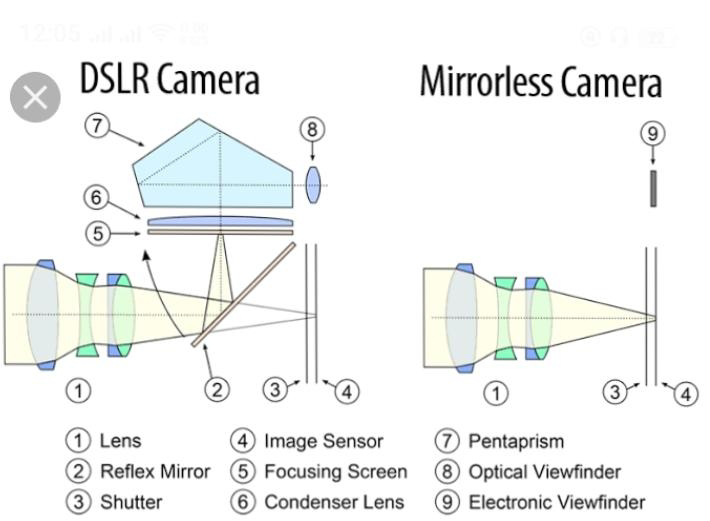A type of camera that works without a reflex mirror is called Mirrorless Camera. Light passes through the lens directly to the digital sensor, which then displays your image on the camera’s LCD screen, allowing you to adjust settings and preview your image before its shot. It is an interchangeable-lens camera (MILC) or simply a mirrorless camera, also called digital single-lens mirrorless (DSLM), is a photo camera featuring a single, removable lens and digital display.
It has the advantage of usually being lighter, more compact, faster and better for video; but that comes at the cost of access to fewer lenses and accessories. For DSLRs, advantages include a wider selection of lenses, generally better optical viewfinders and much better battery life.
Compared to DSLR cameras, mirrorless cameras are mechanically simpler and are typically smaller, lighter, and quieter due to the elimination of the moving mirror. While nearly all mirrorless cameras still have a mechanical shutter, many also have an electronic shutter, allowing completely silent operation. The fact that the image from the lens is always projected onto the image sensor allows for features that are only available in DSLRs when their mirror is locked up into “live view” mode. This includes the ability to show focus-peaking.
Positive and Negative aspects are light, small and compact, less moving parts, they’re quieter than other cameras, no flicking mirror means no camera shake, reliable video mode, the electronic viewfinder can be used in video mode.
Credits: Jothika


Comments
Post a Comment